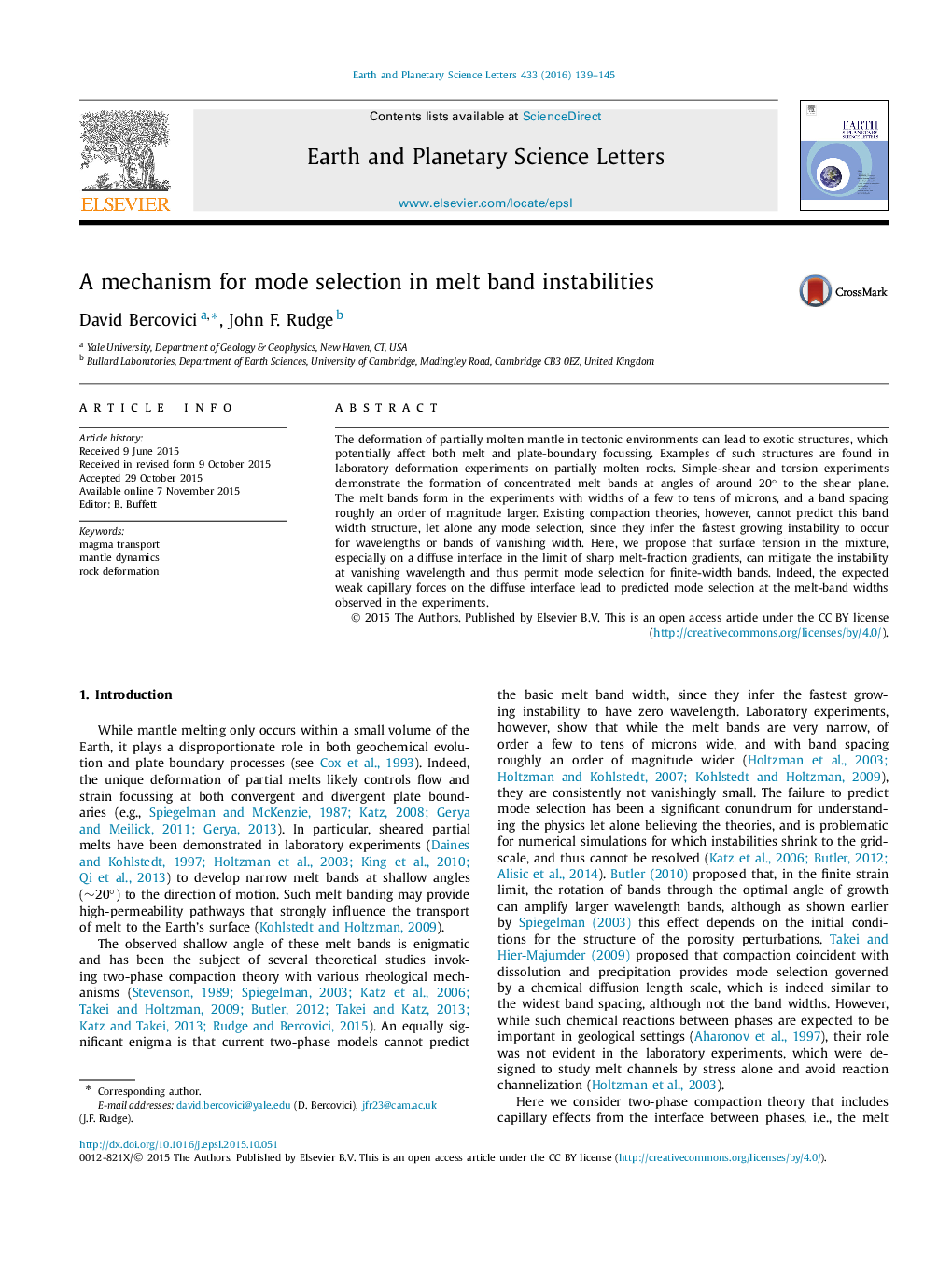| کد مقاله | کد نشریه | سال انتشار | مقاله انگلیسی | نسخه تمام متن |
|---|---|---|---|---|
| 6427693 | 1634723 | 2016 | 7 صفحه PDF | دانلود رایگان |
- Partially molten mantle rock forms concentrated melt bands when sheared.
- Melt bands are several to tens of microns wide and can enhance melt transport.
- Standard compaction theory predicts melt band widths to have zero thickness.
- A new mechanism with capillary effects on a diffuse interface is proposed.
- Compaction theory with the new physics accurately predicts melt band widths.
The deformation of partially molten mantle in tectonic environments can lead to exotic structures, which potentially affect both melt and plate-boundary focussing. Examples of such structures are found in laboratory deformation experiments on partially molten rocks. Simple-shear and torsion experiments demonstrate the formation of concentrated melt bands at angles of around 20° to the shear plane. The melt bands form in the experiments with widths of a few to tens of microns, and a band spacing roughly an order of magnitude larger. Existing compaction theories, however, cannot predict this band width structure, let alone any mode selection, since they infer the fastest growing instability to occur for wavelengths or bands of vanishing width. Here, we propose that surface tension in the mixture, especially on a diffuse interface in the limit of sharp melt-fraction gradients, can mitigate the instability at vanishing wavelength and thus permit mode selection for finite-width bands. Indeed, the expected weak capillary forces on the diffuse interface lead to predicted mode selection at the melt-band widths observed in the experiments.
Journal: Earth and Planetary Science Letters - Volume 433, 1 January 2016, Pages 139-145
